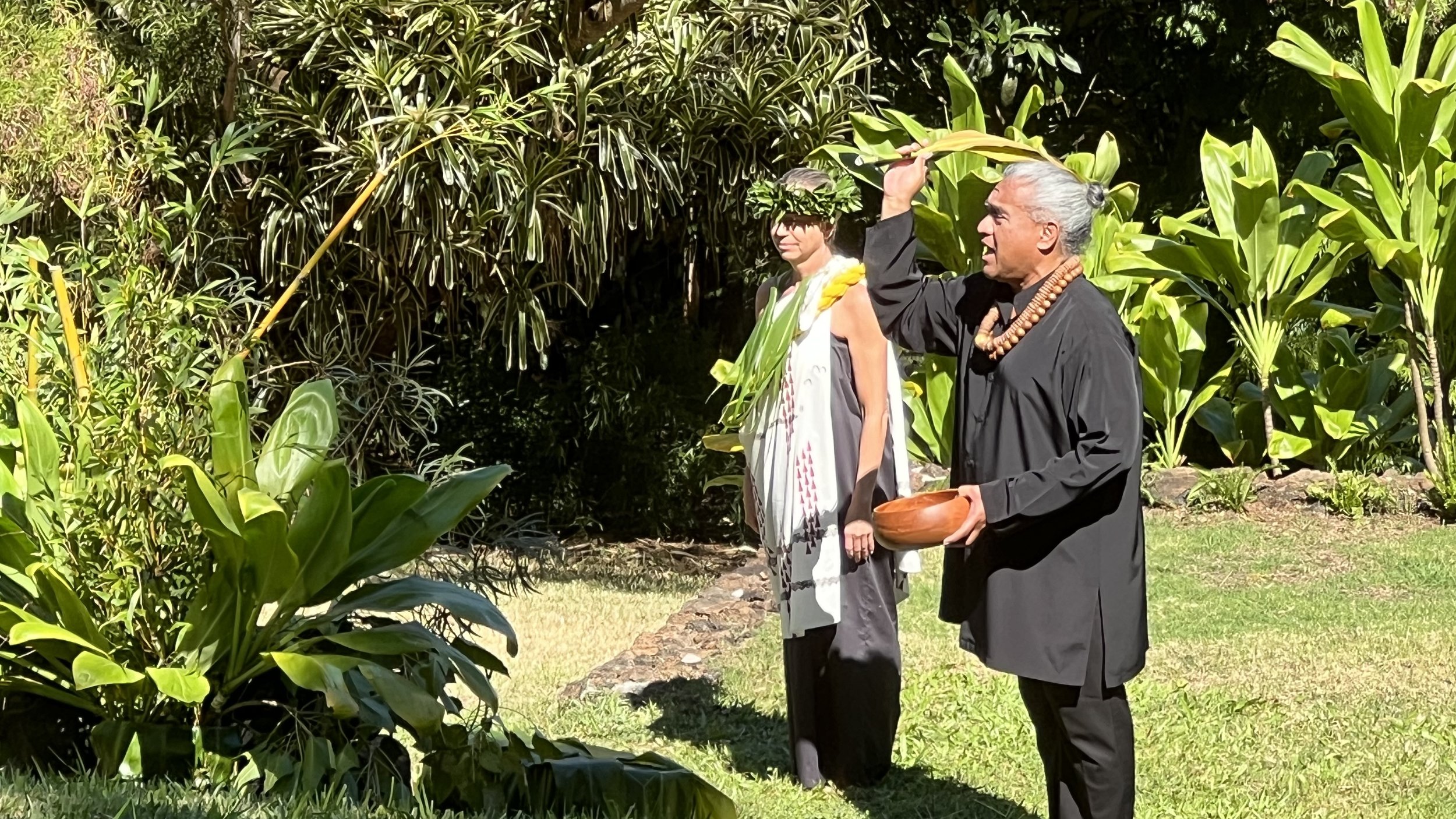Hula allows me to feel connected to this place, this family, this community, this language.
It is through hula that I continue to learn more about myself and this place, finding grace in my own aging, and ways for me to love this place more.
The story telling. The illusion. The presentation. Tradition. Audience.
I would never presume to represent ancient Hawaiian voices or to pretend to “know” Hawaiian values or claim any expertise. But through Hula, I can at least participate. At this late age, I can taste it, touch it.
I was 65 years old when I started learning how to dance hula with Halau Hula Nā Kupuna O Kohala under the direction of Kumu Hula Kaui Nakamura. Some of my fellow hula dancers were born and raised here; many of us are, strictly speaking, visitors, no matter how many decades we have lived in Kohala. While hula affects each dancer differently, there is a saying, O ka hula ke ola, “Hula Is Life,” which is beginning to define how I personally live. This can be interpreted in practical ways: be prepared, pull your weight, work with others, not against them. Another important thought is that each of us represents our hula halau out in the world. When possible, we dance at the annual Kupuna Hula Festival in Kailua-Kona; we dance at the Kohala Country Fair, the Hawaii Wildlife Center annual celebration and Kohala High School May Day. We dance at the local Bamboo Restaurant. We dance at all kinds of events, including memorials. “Hula is life” clearly reflects my “pilina,” my connection to this place. It is through hula that I continue to learn more about myself and this place, finding grace in my own aging, and ways for me to love this place more. I am also involved in broader efforts to perpetuate the hula in my role as secretary of the nonprofit foundation, Na Wai Iwi Ola, under the direction of Kumu Hula Keala Ching, in Kailua-Kona.































